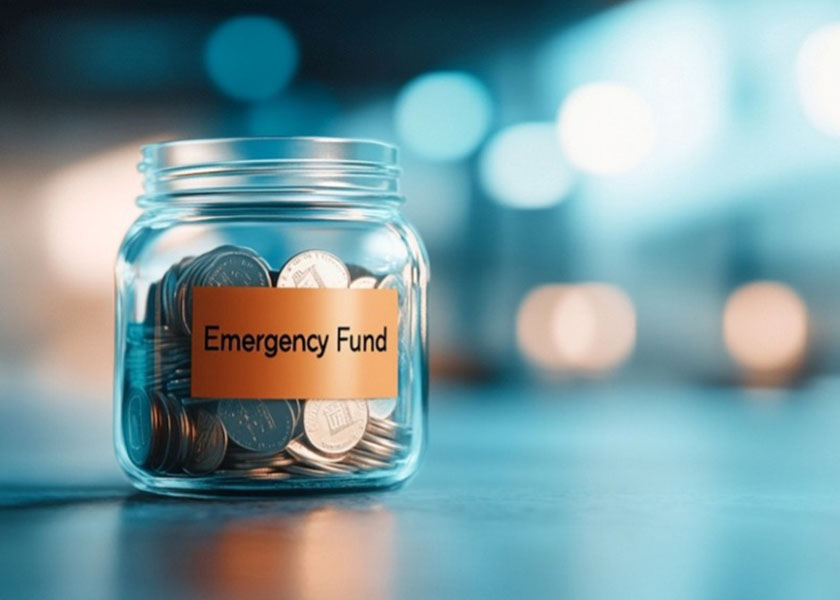The importance of a robust emergency fund is a financial principle that should be emphasized when trying to achieve financial confidence. It’s the financial bedrock beneath your feet- the safety net that ensures life’s inevitable surprises don’t derail your long-term goals. Yet, despite its importance, one question continues to surface across demographics and income levels: “How much is enough?” It’s a simple question with a surprisingly complex answer that we’re going to explore.
What is an Emergency Fund?
At its core, an emergency fund is a reserve of liquid, easily accessible cash set aside to cover unexpected expenses- things like medical bills, car repairs, job loss, urgent home repairs, etc. It is not an investment tool, a vacation fund, or a bucket for irregular but anticipated expenses like property taxes or annual insurance premiums. It is strictly for the truly unexpected.
The Traditional Rule of Thumb
You’ve likely heard the standard advice: Set aside 3 to 6 months’ worth of essential living expenses.
This guideline is a good starting point. For a household with $4,000 in monthly necessary expenses, that translates to $12,000–$24,000 in emergency savings. “Necessary” here includes housing, utilities, groceries, transportation, insurance, and minimum debt payments. But here’s the reality: one-size-fits-all advice doesn’t apply to everyone.
Variables That Impact Your “Enough”
When determining how much you personally need in your emergency fund, we evaluate a number of factors:
- Employment Stability or Income Predictability for Retirees
If you’re a tenured professor or an employee with a high degree of job security, 3 months may be sufficient. But if you’re self-employed, work on commission, or in a volatile industry, 6-12 months might be more prudent. For retirees, while traditional employment isn’t a factor, the stability of your income sources still matters. Are you relying primarily on guaranteed income like Social Security or a pension? Or are you drawing from market-dependent investments like IRAs and brokerage accounts? If the latter, you’ll want a more substantial emergency fund- typically enough to cover 12-24 months of essential expenses- to avoid selling investments during a market downturn. - Number of Income Sources
Dual-income households with both earners in secure positions may feel comfortable with a smaller cushion. A single-income household or family where one earner supports dependents should aim higher. - Fixed Vs. Flexible Expenses
Those with higher fixed costs- such as a mortgage, loan obligations, or expensive insurance premiums- need a larger fund because it’s harder to cut costs quickly in a crisis. - Health and Insurance
If you or a family member has chronic health conditions, or if you have a high-deductible health plan, your emergency fund should account for potential medical expenses. - Stage of Life
Young professionals just starting out, families with children, and retirees each face unique risks. A retiree, for instance, may need a more substantial fund to avoid withdrawing from investments during market volatility.
The Psychological Value of an Emergency Fund
Beyond the numbers, there’s a psychological aspect we cannot ignore. Financial stress is a leading cause of anxiety- and often, poor decision-making. Having a well-funded emergency reserve isn’t just about survival, it’s about financial confidence. Knowing you can weather an unexpected job loss or a major car repair without going into debt allows you to sleep better at night and stay on track with your long-term plans.
Where Should You Keep It?
Liquidity is key. This fund should be easily accessible, but not so accessible that you’re tempted to dip into it unnecessarily. A high-yield savings account at a reputable bank or credit union is often the best option- it earns a modest return while keeping your funds safe and available. Avoid tying this money up in stocks, real estate, or retirement accounts. The point of this fund is certainty, not growth.
Replenish and Reassess
Used your emergency fund recently? Replenish it as soon as you can, even if it means temporarily reducing contributions to non-essential expenses or lower-priority financial goals. Your financial situation will evolve. Reassess your emergency fund annually or after major life events like a career change, marriage, divorce, or the birth of a child. Adjust accordingly.
Final Thoughts: Enough is Personal
So how much is “Enough”? The truth is, enough is not a fixed dollar amount- it’s a level of preparedness and financial confidence tailored to your unique circumstances. At Financial Independence Planning, we work with each client to define what enough looks like in the context of their goals, risks and lifestyle.
Whether you’re building your emergency fund from scratch or reevaluating your current reserves, we encourage you to take this step seriously. It’s not about pessimism, it’s about resilience. Because when life throws the unexpected your way- and it will- you’ll be ready because you planned for the known and prepared for the unknown.


